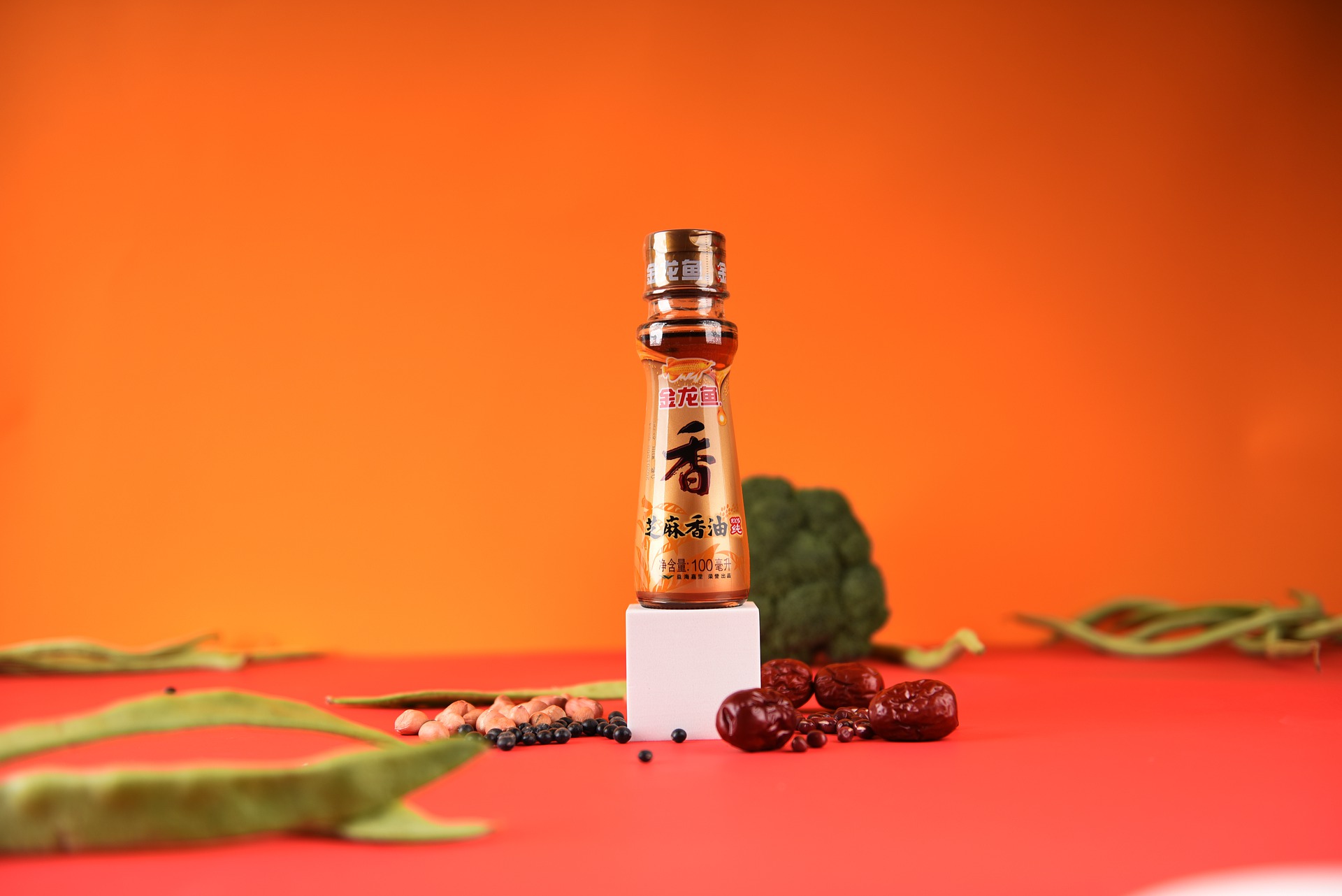Extra virgin olive oil has been the reigning king of healthy oils for the last three decades. But what to do when that same flavor gets a little tiring? Here’s where sesame oil comes in.
Do you know that nutty flavor that you get in most Asian dishes? That flavor comes from using sesame oil.
A staple in the cooking of many countries in Asia and the Middle East, sesame oil gives you both flavor and health. If you are looking for a healthy oil to spruce up your cooking, sesame is the way to go.
What Is Sesame Oil?
- Even if you have never tasted sesame oil before, chances are that you have eaten sesame seeds. You might have found them sprinkled on top of a freshly baked bun or bit into them while chewing your salad.
- Sesame oil has been used in Asian cooking for centuries and is used in both sweet and savory recipes. The oil is derived from sesame seed by going through a pressing process.
- Sesame oil can be both hot-pressed and cold-pressed. The pressure from being pressed separates the oil from the crushed seeds. However, hot pressing oxidizes the oil and destroys its nutrients. So cold-pressed sesame oil is the healthier option.
- Sesame oil can be both dark and light. Dark sesame oil is made from toasted sesame seeds and has a stronger flavor. Light sesame oil has a lighter flavor and should be used in recipes that only require a mild hint of the oil.
How to Use Sesame Oil in Cooking
If you want to cook with sesame oil, it is usually better to use light sesame oil. It has a mild fragrance and wouldn’t overpower the other flavors of the dish.
You can use light sesame oil like any regular cooking oil. It has a higher smoking point, so you can also use it for deep frying. So whether you want to stir fry vegetables or pan-sear fish, you can use light sesame oil.
Dark sesame oil is used mostly as a seasoning due to its heavy flavor. You can use a splash of sesame oil at the end of cooking to enhance its flavor.
You can also add it to salads and soups for an added kick. Koreans use sesame oil to season the rice for their Kimbap rolls or add it to sauces like in this sriracha beef recipe.
Sesame Oil Nutrition Facts
When people decide to change oil, they might think that the main factor is calories. If you are counting calories, you might be discouraged by the labels. Because oils are essentially fat, and nothing will change that. However, what makes some oils heart-healthy are polyunsaturated and monounsaturated fats.
Each tablespoon of sesame oil has 13.5g of fat. But it is low on unhealthy saturated fat, which causes cholesterol buildup in your arteries. It has a balanced quantity of healthy oils like omega-3, omega-6, polyunsaturated, and monounsaturated fats.
Any oil should be used in moderation in your daily diet. Much like other oils, one tablespoon of sesame oil has around 120 calories. Similarly, it has no proteins and carbs.
Health Benefits of Sesame Oil
Processed oils like soybean, sunflower, and vegetable oil don’t do much for your health. Sesame oil is high in calories like other oils, but when used in moderation, you can enjoy its many health benefits. Here are a few ways sesame oil can boost your health.
- Sesame oil is stocked with healthy fats, which means it prevents cholesterol. This makes it an excellent choice when you want to switch to a heart-healthy oil.
- Sesame oil has two compounds called sesamol and sesamol. These are two powerful antioxidants. Antioxidants help prevent the build-up of free radicals in your body. These free radicals can cause diabetes, asthma, and even cancer.
- The oil has strong anti-inflammatory properties, which is why it has been used in ancient medications all over Asia. People use it to lower joint pain especially related to arthritis, treat wounds, and even reduce toothache.
- A few studies have shown that the regular consumption of sesame oil can help regulate blood sugar levels, making you less prone to diabetes.
What Can You Make With Sesame Oil?
There is an array of Asian dishes you can make with sesame oil. Many of your Asian favorites like kung pao, tempura, dim sum, chicken Tso, and other such recipes use sesame oil.
You can replace olive oil in almost any recipe with light sesame oil. You can use dark sesame oil to make vinaigrettes, season your soba noodles, and flavor your hummus. Asians flavor their boiled leafy greens with sesame oil and serve it as a side dish.
How you use sesame oil is entirely up to you. You can either use it to make a recipe that requires it or use it in replacement of another cooking oil. If you like its rich, nutty flavor, get creative with it and use it in any recipe you think it can add value to.
Sesame Oil Substitute
- In some places, sesame oil can be difficult to find. So what can you do for recipes that need it? Try this hack that uses sesame seeds to make any flavorless cooking oil taste like sesame oil.
- Lightly toast raw sesame seeds on a frying pan. Keep the temperature low and pour some fragrance-free cooking oil like canola or sunflower oil.
- Cook at a low temperature until the aroma of the toasted sesame seed is infused into the oil. You can do this at the beginning of any recipe. You can also use sesame paste in some recipes.
- If you are allergic to sesame oil and are looking for an alternative, you can use any flavorful oil you are not allergic to. Try using olive oil, walnut oil, avocado oil, or roasted peanut oil. If you want a stronger flavor, you can also use mustard oil or perilla seed oil.
Sesame Oil FAQ
What Is the Smoking Point of Sesame Oil?
Refined light sesame oil has a smoking point of 410 degrees Fahrenheit. This makes it great for any high heat cooking, like baking, broiling, and deep-frying.
Unrefined light sesame oil has a smoking point of 350 degrees Fahrenheit. It can be used for medium to low heat cooking. You can try pan-searing meat or fish, making pot roast, and other low heat recipes.
Make sure you only use toasted sesame oil for flavoring. Since the seeds used for making this oil have already been cooked, heat can make it bitter and unpalatable. You can drizzle it on cooked food or use it to prepare things that are eaten raw, like salads.
Where Can You Find Sesame Oil?
You should find sesame oil in the condiment section, close to the vinegar. The other place where you can look is the baking aisle, so make sure to check there if you can’t find it.
If your local grocery store has a Chinese or Asian food section, you will definitely find sesame oil there. Can’t find it at the grocery store? Look at any of the Asian markets. Whether in China Town or Little Korea, you are bound to find sesame oil there.
Where to Store Sesame Oil?
You can store refined light sesame oil at room temperature. You can keep it in your pantry or the cupboard but keep it away from heat. Store it in a cool and dark place. Keep it away from direct sunlight.
You can also store it in the fridge, but it isn’t necessary. You might want to do that for toasted sesame oil as it has a lower shelf life.
How Long Does Sesame Oil Last?
If you have an unopened bottle of sesame oil, it should last for one to three years from the manufacturing date.
An opened bottle of sesame oil should be used as soon as possible. It can last anywhere from six months to one year, but how much it retains the original quality depends on storage. In the fridge, it will stay fresh for twelve months.
Organic sesame oil is more prone to spoiling than one with preservatives. If you have an opened bottle of organic and toasted sesame oil, you must store it in the fridge.
Can You Use Sesame Oil for Skincare?
Sesame oil works great for skin care. It is anti-inflammatory and antibacterial. You can use it to manage minor skin problems like pimples and rashes. You can also use it on infections, as it can hydrate, protect, and heal the skin.
Try using it to keep your skin plump and reduce fine lines. It also helps protect and heal from skin damage from harsh UV rays. People also use it to keep their hair and scalp healthy.
Final Thoughts
Sesame oil is one of your best options for cooking oil. You can use refined cooking oil for even high heat cooking, which makes it more versatile than other aromatic oils. It has many health benefits, so adding it to your diet can help you stay fit.
Next time you get a bottle of toasted sesame oil, try drizzling it on your soups and salads. You are bound to notice the wonderful difference in flavor and taste it brings!



Leave a Reply